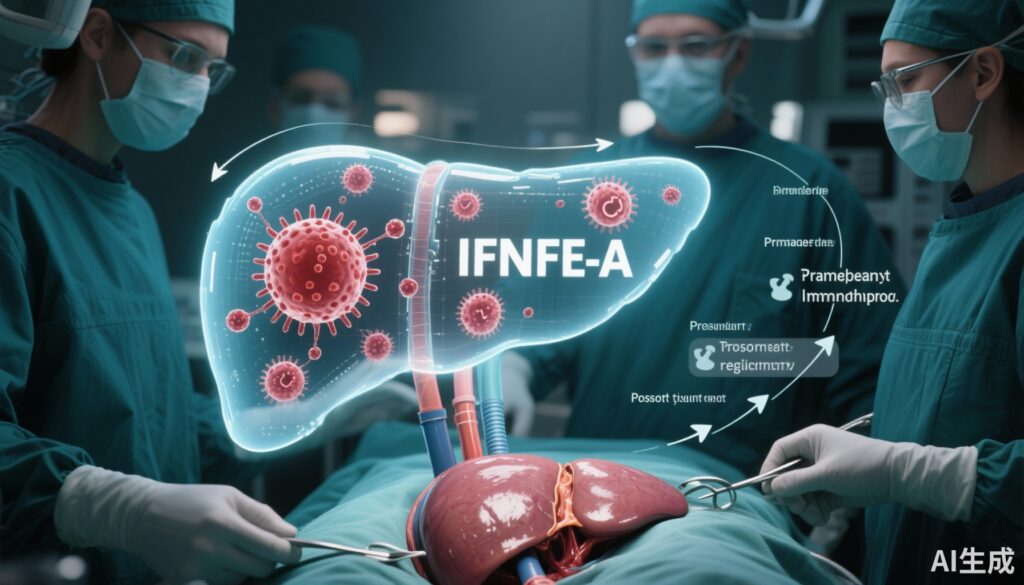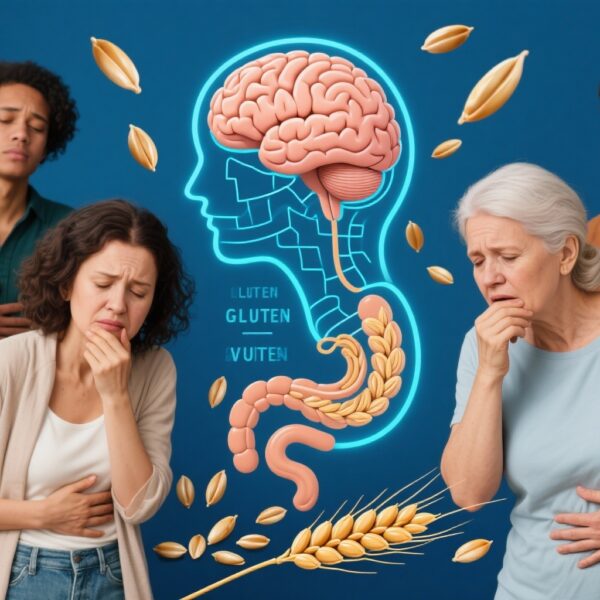Highlights
Patients with immune-related adverse events (irAEs) during pretransplant immune checkpoint inhibitor (ICI) therapy had a markedly higher odds of post‑transplant liver allograft rejection (OR 9.17).
A short washout period from last ICI dose to transplantation (<30 days) and recipient age under 40 years were additional independent risk factors; a multivariable model showed acceptable discrimination (AUC 0.788).
Peripheral immunophenotyping in a small prospective cohort linked irAEs to higher circulating CD8+ T cells and elevated IFN-α and TNF-α, supporting a biologically plausible mechanism of heightened immune activation.
Background
Immune checkpoint inhibitors (ICIs) targeting PD-1, PD-L1 and CTLA-4 have reshaped systemic therapy for hepatocellular carcinoma (HCC) and are increasingly used for downstaging or bridging to liver transplantation (LT). Combination regimens such as atezolizumab plus bevacizumab have improved survival in unresectable HCC and expanded the use of immunotherapy in patients potentially eligible for curative-intent strategies. However, the immunomodulatory effects that confer anti-tumour benefit can also heighten alloimmune responses against transplanted organs. Case reports and small series have documented episodes of fulminant graft rejection after pretransplant or post‑transplant ICI exposure, creating uncertainty about the safety and optimal timing of LT after ICI therapy.
Immune-related adverse events (irAEs) are clinical manifestations of systemic immune activation against normal tissues during ICI therapy. Because irAEs reflect an activated immune milieu, they could plausibly increase the risk of allograft rejection after transplantation, but systematic evidence linking irAEs to rejection risk in HCC patients undergoing LT has been scarce.
Study design
The study by Fang et al. (Gut, 2025) is a multicentre, national retrospective cohort that included 209 adult patients with HCC who received pretransplant ICI therapy and subsequently underwent liver transplantation between 2018 and 2024. The primary outcome was biopsy‑proven or clinically diagnosed allograft rejection within the post‑transplant period (median time to rejection reported). Clinical covariates captured included demographic features, tumour characteristics, ICI regimen and timing, documented irAEs during ICI therapy, and the washout interval from last ICI dose to LT.
Logistic regression (univariable and multivariable) was used to identify independent risk factors for rejection and to construct a predictive model, with discrimination assessed by area under the receiver operating characteristic curve (AUC). In addition, a separate prospective observational cohort of 23 HCC patients undergoing pretransplant ICI therapy was analysed to explore peripheral blood immune phenotypes (lymphocyte subsets and cytokines) in relation to irAE occurrence.
Key findings
Study population and outcome
– Of 209 patients who received pretransplant ICI therapy and underwent LT, 36 experienced post‑transplant rejection (17.2%).
– Median time from transplantation to rejection was 10 days, indicating early post‑operative vulnerability.
Predictors of rejection
– The presence of irAEs during pretransplant ICI therapy was the single strongest independent predictor of subsequent graft rejection, with an odds ratio (OR) of 9.170 (p<0.001).
– Two additional independent risk factors were identified: recipient age younger than 40 years (OR 3.028, p=0.049) and a short washout interval of less than 30 days from last ICI dose to LT (OR 3.071, p=0.018).
– The multivariable predictive model incorporating these factors produced an AUC of 0.788, indicating acceptable discrimination for identifying patients at higher risk of rejection.
Immune correlates from prospective cohort
– In the prospective observational cohort (n=23), patients who developed irAEs had significantly higher circulating CD8+ T‑cell counts and elevated serum levels of IFN‑α and TNF‑α compared with those who did not develop irAEs (all p<0.05).
– These findings provide correlative evidence that irAEs are associated with a systemic cytotoxic T‑cell–polarised inflammatory state that may predispose to alloimmunity after transplantation.
Clinical and safety implications
– Rejection events clustered early after transplant (median 10 days), highlighting the immediate postoperative period as high risk for patients with prior ICI exposure and/or irAEs.
– Although detailed outcomes after rejection (severity, response to immunosuppression, graft loss, or mortality) are not fully summarised in the synopsis, early and severe rejection is a known driver of graft dysfunction and poor outcome.
Expert commentary and interpretation
Biological plausibility
The association between irAEs and rejection is biologically plausible. irAEs reflect systemic loss of immune self‑tolerance induced by checkpoint inhibition; the same systemic activation of autoreactive/antigen‑reactive T cells may increase recognition of alloantigens presented by the transplanted liver. The prospective cohort’s findings of elevated CD8+ T cells and proinflammatory cytokines (IFN‑α, TNF‑α) among patients with irAEs lend mechanistic support: these mediators are central to cytotoxic T‑cell effector function and can accelerate alloimmune injury.
Clinical implications and decision-making
– Pretransplant risk stratification: The strong effect size for irAEs (OR ≈9) suggests that documentation of irAEs should be a key element in pretransplant risk assessment for patients who received ICIs. Incorporating irAE history, washout interval and age into clinical decision-making may help stratify patients and inform transplant timing and perioperative planning.
– Washout interval: The finding that a short washout (<30 days) increases rejection risk supports the notion that a longer interval between last ICI dose and transplantation may allow immune activation to wane. However, optimal timing must be balanced against oncologic risk: prolonged delays risk tumour progression and jeopardise transplant candidacy. This trade‑off requires multidisciplinary, case‑by‑case assessment.
– Management strategies: For patients with prior irAEs, heightened post‑transplant surveillance for rejection (earlier and lower threshold for biopsy), consideration of augmented induction immunosuppression, or tailored maintenance regimens may be reasonable. These strategies remain empirical; prospective trials or registries are needed to define optimal protocols and to weigh rejection prevention against infection and tumour recurrence risks.
Limitations and generalisability
– Retrospective design: As with all retrospective cohorts, residual confounding and selection biases are possible. Decisions about timing of LT and ICI use—and which patients proceeded to transplant—likely varied between centres and over time.
– Heterogeneity: The cohort likely includes heterogeneous ICI agents, combinations, dosing schedules and variable definitions of irAEs and rejection severity; such heterogeneity can affect effect estimates.
– Small mechanistic cohort: The prospective immune profiling was limited (n=23), so findings are hypothesis‑generating rather than definitive. The temporal relationship between cytokine elevations, irAE onset and transplant timing requires more granular evaluation.
– Outcome granularity: The summary does not provide detailed outcomes after rejection (response to therapy, graft survival, patient survival), which are critical to guide clinical risk–benefit decisions.
Context with prior literature
Prior systematic reviews and case series have raised concerns about rejection after ICI exposure in solid organ transplant recipients, documenting variable rejection rates and often severe outcomes. The current multicentre series adds valuable population‑level data specific to HCC and LT, and—importantly—identifies irAEs as a potent, measurable predictor that can be ascertained before transplantation.
Practical recommendations for clinicians
– Document and weigh irAE history when evaluating HCC patients who received ICIs for transplant candidacy; a history of irAEs should prompt multidisciplinary discussion and informed consent regarding increased rejection risk.
– Consider extending the washout interval from last ICI dose when feasible, recognising the oncologic trade‑offs; 30 days appears to be a threshold associated with increased risk in this study, but individualisation is required.
– Implement heightened early post‑transplant surveillance for rejection (earlier liver function monitoring, low threshold for Doppler and biopsy) in patients with prior irAEs or short washout intervals.
– Multidisciplinary planning should include transplant hepatology, surgical teams, oncologists experienced in ICI management, and transplant immunologists to craft perioperative immunosuppression strategies and contingency plans for rejection.
– Enrol patients in prospective registries or trials whenever possible to accrue higher‑quality evidence on timing, immunosuppression strategies, and outcomes.
Conclusion
This large multicentre retrospective study establishes immune‑related adverse events as a strong predictor of early post‑transplant liver allograft rejection in HCC patients who received pretransplant immune checkpoint inhibitors. A short washout period and younger recipient age were additional independent risk factors. Small prospective immune profiling links irAEs to an activated cytotoxic immune state, supporting biological plausibility. These findings support incorporating irAE status into pretransplant risk assessment and underscore the need for prospective studies to define safe timing, monitoring, and immunosuppression approaches to optimise outcomes in this growing clinical scenario.
Funding and clinicaltrials.gov
Please refer to the original Gut publication for detailed funding sources and trial registration information: Fang J et al., Gut. 2025. The summary presented here does not add or alter funding or registration statements reported by the authors.
References
1. Fang J, Zhong S, Wang T, He K, Mu A, Ong M, Lin Y, Zhu Z, Wang N, Wu J, Wang Z, Li Z, Gao F, Zhuang L, Guo Z, Zheng S, Li H, Zhang S, Ling Q. Immune-related adverse events are a potent predictor of post-transplant rejection in HCC: a multicentre retrospective cohort study. Gut. 2025 Nov 4:gutjnl-2025-336719. doi: 10.1136/gutjnl-2025-336719. Epub ahead of print. PMID: 41193174.
2. Finn RS, Qin S, Ikeda M, Galle PR, Ducreux M, Kim TY, Kudo M, Breder V, Merle P, Piscaglia F, et al. Atezolizumab plus bevacizumab in unresectable hepatocellular carcinoma. N Engl J Med. 2020 May 14;382(20):1894-1905. doi:10.1056/NEJMoa1915745.



